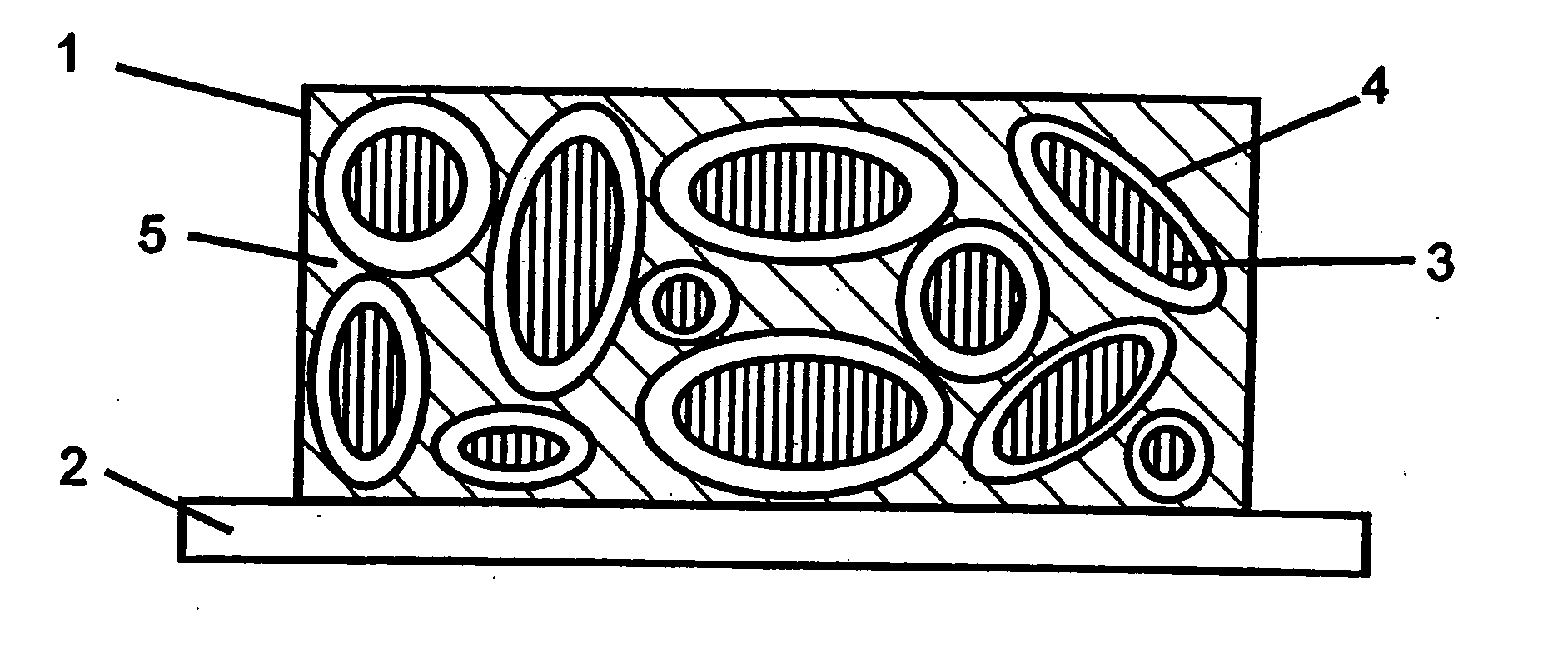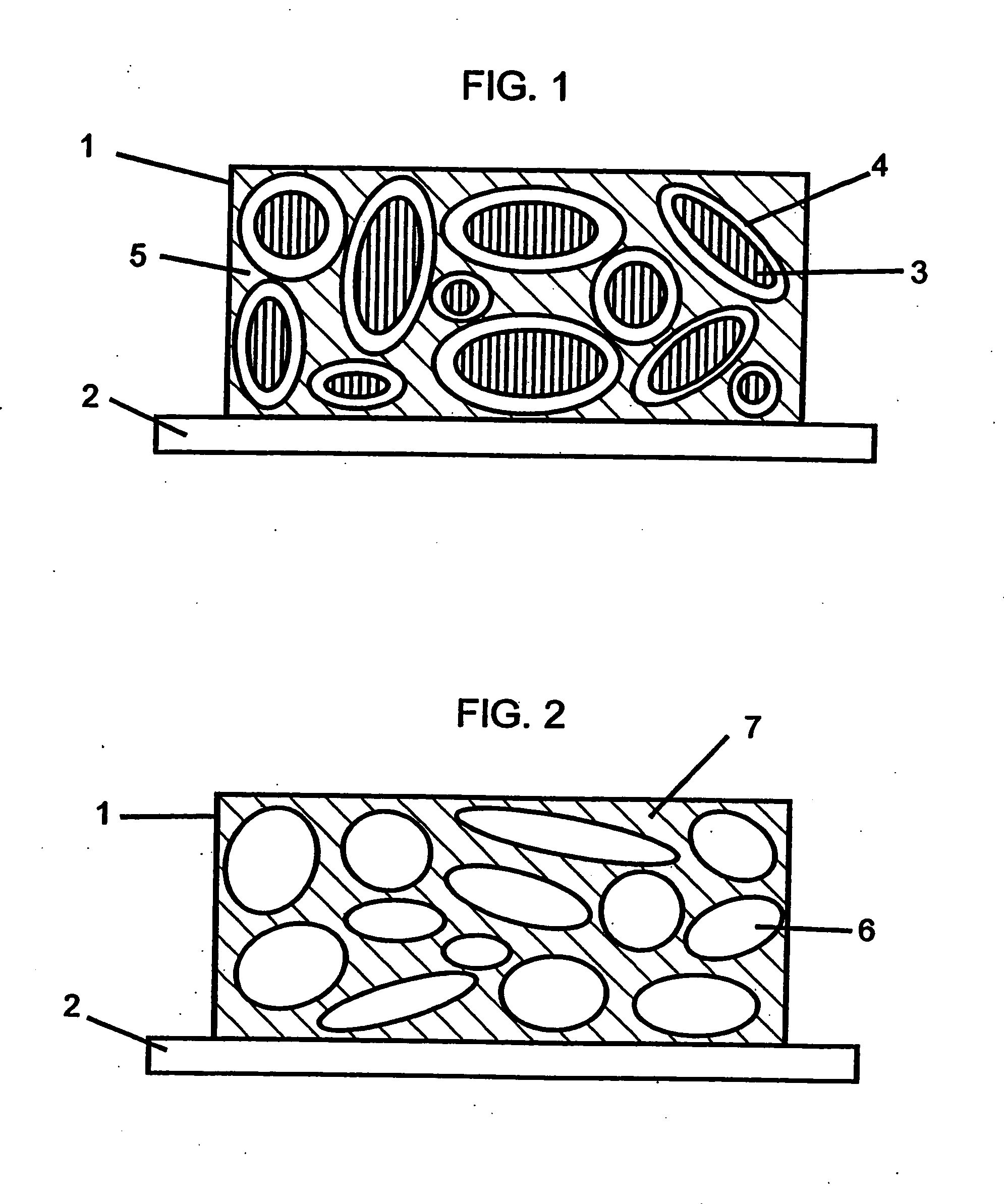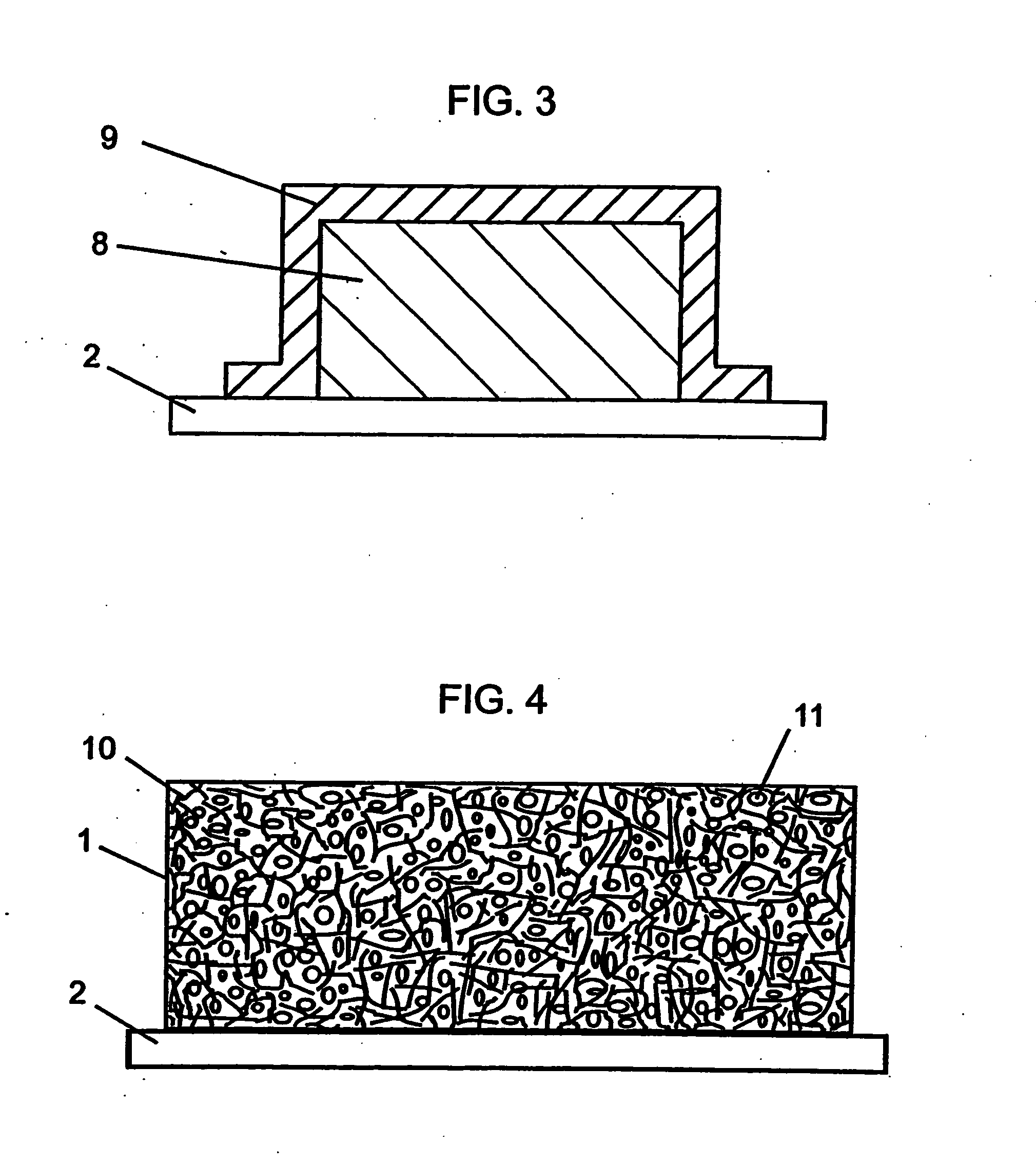Novel composite cathodes, electrochemical cells comprising novel composite cathodes, and processes for fabricating same
a composite cathode and composite cathode technology, applied in sustainable manufacturing/processing, non-aqueous electrolyte cells, non-metal conductors, etc., can solve the problems of reduced capacity, complete cell failure, and reduced utility of organo-sulfur material as cathode-active material
- Summary
- Abstract
- Description
- Claims
- Application Information
AI Technical Summary
Benefits of technology
Problems solved by technology
Method used
Image
Examples
example 1
[0244] This example describes the fabrication of a composite cathode of the present invention. Vanadium oxide isopropoxide (25 mL, Alpha AESAR Co.) was placed in a dry flask and 500 mL of acetone (having 0.5% water) was added drop wise to the alkoxide liquid with constant stirring. The amount of acetone added was based on getting a final concentration of vanadium pentoxide (V2O5) in the sol (solution) of 4 g / 100 mL. After mixing the vanadium oxide isopropoxide with acetone, a mixture of water-acetone (1 to 10 by volume) was added drop wise; the total molar ratio of water to vanadium alkoxide was 0.5, including the water present in the acetone. The color of the sol was yellow to orange. The molar ratio of water to alkoxide can be varied in the range 0.5 to 3.0, depending on the subsequent slurry and coating procedure desired.
[0245] A slurry of a electroactive sulfur-containing cathode material was made with the sol prepared above. A requisite amount of sulfur was taken in a mortar a...
example 2
[0246] In this example, a sulfur-containing composite cathode of the present invention with the configuration shown in FIG. 3 was fabricated on a nickel foil current collector substrate. The composition of the electroactive sulfur-containing cathode layer was as follows: 44 wt % sulfur, 26 wt % carbon (SAB), and 30 wt % of a UV curable binder comprising 25 wt % polyethyleneglycol dimethacrylate, 25 wt % polyethyleneglycol divinylether, and 50 wt % polyethyleneglycol dimethylether. After UV curing of the cathode layer, the sulfur-containing cathode layer was coated with the V2O5 sol prepared in Example 1 using a dipping technique. Two dippings were made. Subsequently, the coated composite cathode was dried in a vacuum oven at 60° C. for an hour.
[0247] It was noted that the sulfur-containing cathode layer obtained by casting of the slurry was porous. It was found that the sol mix impregnated through the pores in the sulfur-containing cathode layer and formed a thin V2O5 gel layer at ...
example 3
[0248] Vanadium oxide isopropoxide (12.53 mL, Alpha AESAR Chemical Co.) was dissolved in anhydrous ethylene glycol dimethyl ether (DME) resulting in a slightly yellow solution. Subsequently 4.0 mL of a solution of 0.4644 g of water in 5 mL DME was added dropwise over 30 minutes at 20° C. with stirring under dry argon. The resulting yellow-brown, slightly translucent sol was stirred for 2.5 hour and stored under positive argon pressure. The concentration of vanadium oxide in the as synthesized sol was 4.4 g / 100 mL. To this sol was added powdered sulfur and conductive carbon with mixing to make a slurry. Prior to use, the sulfur and carbon were dried in an oven at 60° C. and 180° C., respectively and subsequently stored in a dry room.
[0249] The slurry was processed using a ball milling technique. The jars and beakers used for the slurry making were dried in an oven at 110° C. for several hours and were stored in a dry room. The powdered sulfur was first mixed with the vanadium sol in...
PUM
| Property | Measurement | Unit |
|---|---|---|
| mean particle size | aaaaa | aaaaa |
| thickness | aaaaa | aaaaa |
| thickness | aaaaa | aaaaa |
Abstract
Description
Claims
Application Information
 Login to View More
Login to View More - R&D
- Intellectual Property
- Life Sciences
- Materials
- Tech Scout
- Unparalleled Data Quality
- Higher Quality Content
- 60% Fewer Hallucinations
Browse by: Latest US Patents, China's latest patents, Technical Efficacy Thesaurus, Application Domain, Technology Topic, Popular Technical Reports.
© 2025 PatSnap. All rights reserved.Legal|Privacy policy|Modern Slavery Act Transparency Statement|Sitemap|About US| Contact US: help@patsnap.com



